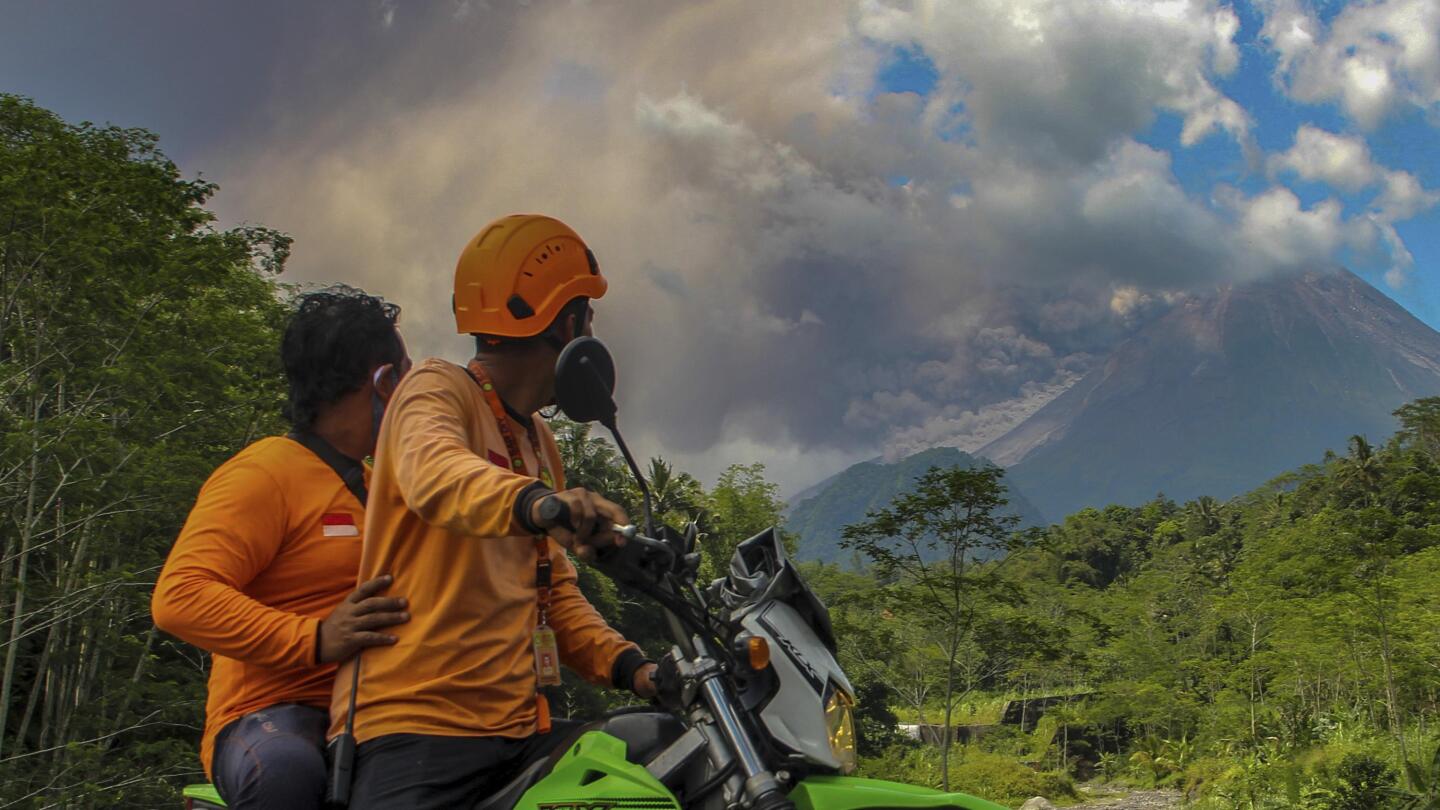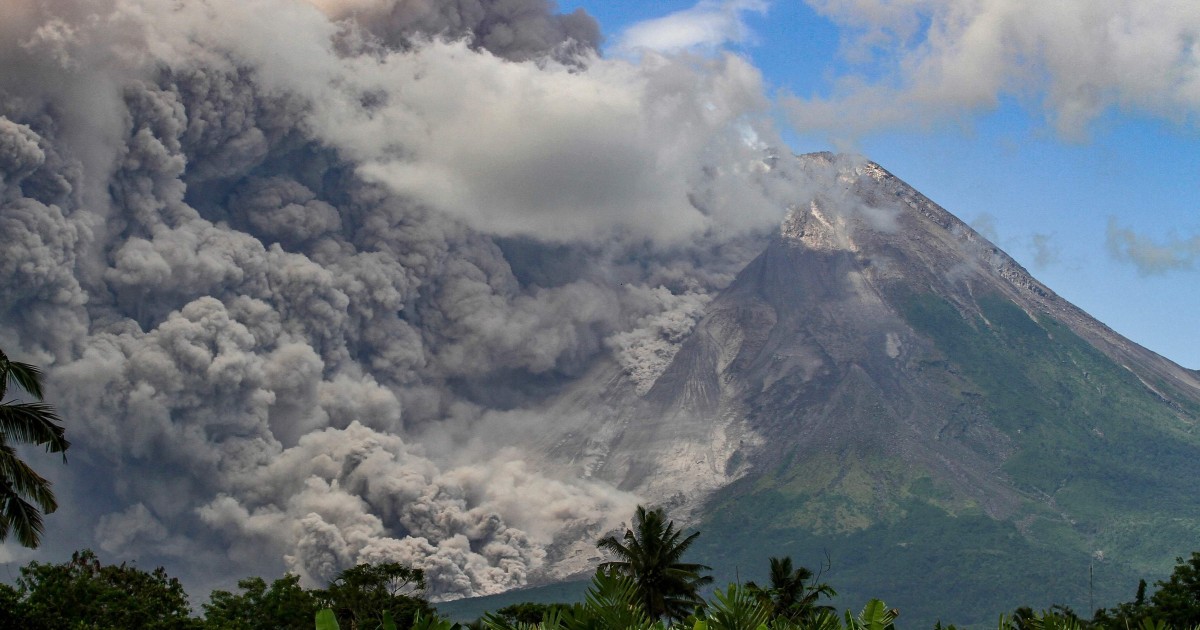On Saturday, Mount Merapi in Indonesia erupted, spewing hot ash and smoke that blanketed villages near the crater. This event forced authorities to halt tourism and mining activities on the slopes of the country’s most active volcano.

Located in the Yogyakarta special region on Java Island, Merapi is one of Indonesia’s most active volcanoes, with its last major eruption in 2010, which killed more than 300 people and forced the evacuation of some 280,000 residents.
The eruption in 2023 was Merapi’s most powerful eruption since 1930, leaving at least eight villages affected by volcanic ash.
Mount Merapi is located in Central Java, Indonesia, and is considered one of the world’s most active and dangerous volcanoes.
It has been erupting regularly since 1548, and its last major eruption in 2010 was considered the most powerful and destructive eruption in Indonesia in the past century.
Merapi’s eruptions are typically explosive and unpredictable, releasing ash, gas, and lava that travel down its slopes at high speeds.
It is monitored by the Indonesian Center for Volcanology and Geological Hazard Mitigation (CVGHM), which maintains a 24-hour monitoring system.
According to reports, Merapi erupted, unleashing a column of hot clouds that rose 100 meters into the air.
The eruption blocked out the sun, and at least eight villages near the volcano were affected by volcanic ash. The ash covered houses and roads, making travel difficult, and reducing visibility.
The hot ash, rock, and gas mixture traveled up to seven kilometers (4.3 miles) down the slopes of the volcano, forcing authorities to halt tourism and mining activities on its slopes.
The Indonesian government also issued a warning to residents living near the volcano to remain alert and take precautions against the dangers posed by the eruption. Fortunately, there were no immediate reports of casualties.
The eruption of Mount Merapi has had a significant impact on the surrounding communities and the wider Indonesian economy.
The ash from the eruption has covered crops and farmland, potentially damaging crops and affecting food production.
The disruption of tourism and mining activities has also had an economic impact, with many businesses facing closures and job losses.
Additionally, the eruption has raised concerns about the safety of communities living near the volcano, with some residents forced to evacuate their homes due to the threat of lava and ash.
The Indonesian government has responded to the eruption by sending emergency aid to affected communities, including food, water, and medical supplies.
They have also urged residents living near the volcano to remain alert and take precautions against the dangers posed by the eruption.
The eruption of Mount Merapi highlights the ongoing risk of volcanic activity in Indonesia, a country that sits along the Pacific Ring of Fire, an area of high volcanic and seismic activity.
Indonesia has more than 120 active volcanoes, making it one of the most volcanically active countries in the world.
The eruption of Mount Merapi is a reminder of the need for continued monitoring and preparedness to mitigate the impact of volcanic activity on communities and the wider economy.
The eruption also highlights the need for sustainable development and disaster risk reduction measures to be implemented in Indonesia and other at-risk countries.
These measures include developing early warning systems, building more resilient infrastructure, and ensuring that communities have the resources and knowledge to respond to disasters.

/cloudfront-us-east-2.images.arcpublishing.com/reuters/FEXOKQCRBBKKXOELTBD5PWOIPY.jpg)





















+ There are no comments
Add yours